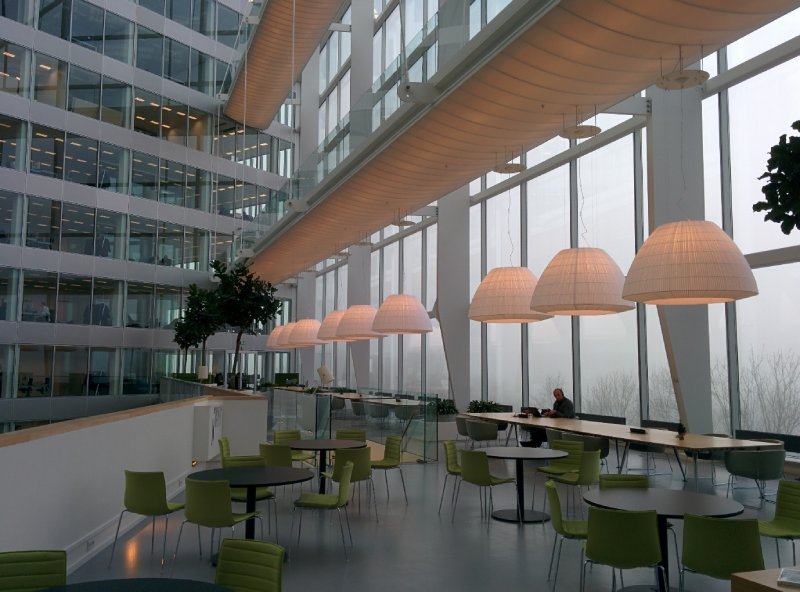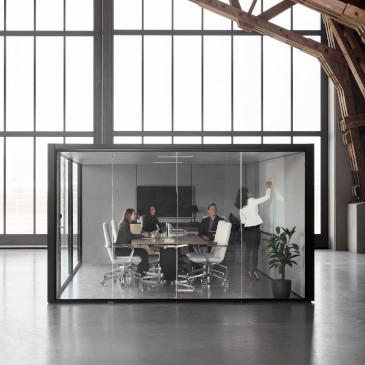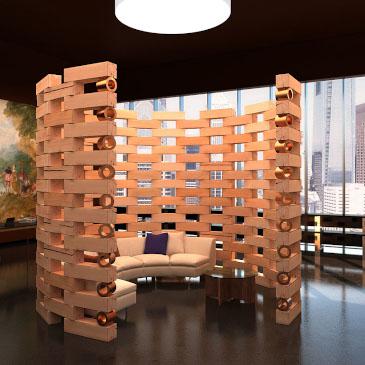The latest corporate office design trends 2023


Workspaces have changed dramatically over the last few years – with the introduction of Gen Z to the workforce and the Covid pandemic acting as catalysts for businesses to think about how (and where) work is best carried out.
As a result, priorities for workspaces have adapted, and in 2023, there are some new factors to consider when designing office spaces to ensure the environment works with your business rather than against it.
Keep reading for the latest corporate office furniture trends for 2023 and beyond.
How and why have office spaces changed over the last few years?
Attitudes to work environments have altered enormously over the last few years – and many businesses have had to reassess the role of office spaces on an operational and fiscal level.
Whether companies have adopted hybrid working or returned to the traditional full-time office model – the way homeworking impacted attitudes to workspaces during the pandemic are still being felt well into 2023.
A recent study indicates that over 30% of full-time UK employees are currently working in a hybrid capacity, and a higher percentage would prefer that model [1].
The introduction of Gen Z in the workplace also impacts how businesses approach workspaces. This young new workforce expects more flexibility in their work environment, and they want businesses to commit to sustainable practices and their social responsibility.
The latest office design trends
Keep reading as we discuss the latest office design trends and ways businesses can implement them.
1. Balance between private and communal spaces
The pandemic was an opportunity to identify how we work best. For some, homeworking was the perfect environment for producing their best work – realising that the open plan office layout wasn’t conducive to productivity. In contrast, others found the solitude difficult – and the barriers to communication soon impacted their ability to produce results.
Now, establishing a balance between private and communal spaces in an office is key to a productive working environment – through cultivating deep workspaces by way of private areas with minimal distractions, and social spaces for workers to communicate, collaborate or simply relax is key.
Balancing private and communal spaces looks like:
- Investing in common rooms, pause spaces and collaborative spaces
- Introducing soundproofing tools such as screens, pods, walls
- Scrapping the open plan layout where possible and creating designated spaces with purposes to each
- If open plan is the only option – then investing in privacy screens and soundproofing office partitions or meeting pods is the next best thing
- Providing a mixture of collaborative tables (conference tables) and individual desks


2. Sustainability
Corporations and their employees are becoming more conscious of their environmental impact on the planet, and this is being reflected in all aspects of business – including furniture.
Sustainability in office design:
To mitigate the environmental impact of office furniture, companies are encouraged to purchase furniture made from sustainable materials and produced by companies with environmentally friendly manufacturing processes. Bespoke furniture in particular can reduce a lot of waste seen in some mass-manufactured counterparts and provides custom pieces that will last a long time.
Additionally, companies can look for office furniture that is easily recyclable or made with recycled materials and dispose of furniture responsibly when it reaches the end of its useful life.

[Bespoke Morph] Morph Modular furniture is easily repurposed, made from 100% recycled materials, and is 100% recyclable.

[Craftwand modular walls] Craftwand walls are made out of wood from renewable forests.
3. Comfort & ergonomics
Keyboard work is reported as being the third biggest cause of musculoskeletal disorders due to long periods of time sat at desks. Workers are becoming more aware of the impact office work can have on the body, with standing desks and other ergonomics tools currently seeing a surge in demand.
Companies must also compete with the allure of homeworking – with many employees having invested time and money into designing their home office during the pandemic, replicating home comforts in the office is a priority for many businesses if they’re to encourage more in-person participation.
Ergonomic office design:
Ergonomic design can be considered in all aspects of working environments, whether in furniture, lighting, or diversity of spaces. Effective ergonomic design reduces repetitive movement and provides comfort.
It’s all about creating spaces that your employees love to work in, whether it’s soft seating, ergonomic chairs, natural lighting, or a place away from the noise that can help workers relax.
4. Connectivity
Connectivity has become an increasingly important aspect of office design in recent years, as technology has enabled employees to work remotely and collaborate with colleagues in different locations.
Including connectivity in office design not only facilitates communication between employees, but also increases flexibility and adaptability in the office, allowing companies to respond to changes in the way we work and appeal to a younger workforce.
Some ways that connectivity is being incorporated into office design include:
- Meeting rooms are being designed with video conferencing capabilities, allowing remote employees to participate in meetings as if they were in the office.
- Dynamic workspaces can incorporate remote workers and in-person meetings.
- Wireless networks are becoming increasingly common in offices, allowing employees to move around the office and work from different locations while staying connected.
- Offices are being equipped with smart technology, such as digital displays and interactive whiteboards, to enhance collaboration and communication.
5. Dynamic furniture
If the pandemic showed us anything, it’s that flexibility is essential. For office furniture, this means creating spaces with dynamic, easily repurposed elements should the company grow or external factors impact trading capabilities.
How flexible office spaces are being achieved:
Offices are being designed with dynamic elements to accommodate different work styles and needs, including moveable walls, dynamic desks for standing or sitting, and seating that can be adapted into new forms or stored away easily.
Modular office furniture is becoming increasingly popular – enabling businesses to create dynamic spaces in different formations to suit changing needs and requirements as the business grows.



[Morph picnic tables, bench seats, desks]
6. Spaces that consider neurodiversity, mental health, and wellbeing
Spaces that appeal to a variety of people, including those who are neurodivergent or have mental health conditions will be an on-going trend throughout 2023 and beyond.
According to studies, around 15-20% of the global population is neurodivergent, and a further 30% of British people suffer from one or more long-term mental health conditions.
This means inclusive spaces are more important than ever to ensure a healthy and happy workforce.
Supporting wellbeing in office environments:
Private, relaxing spaces for employees to go to manage their stress or reduce overstimulation is key to supporting wellbeing.
Visually stimulating design is also important – and businesses can do this by incorporating bright colours and fun aspects like break rooms and ‘away from desk’ areas to appeal to people with conditions like ADHD.


[Flexible, relaxing workspaces for different work styles] [Fun, stimulating design to encourage participation]
Final word
Office design is an exciting and dynamic industry which, when done right, promises to increase employee engagement and productivity. Being aware of the latest trends in office design can make your business stand out from the crowd, become a place people want to work, and encourage productivity.
Take a look at our case studies here.
If you need help designing, sourcing, procuring, and implementing a new office design – Working Environments Furniture can help.